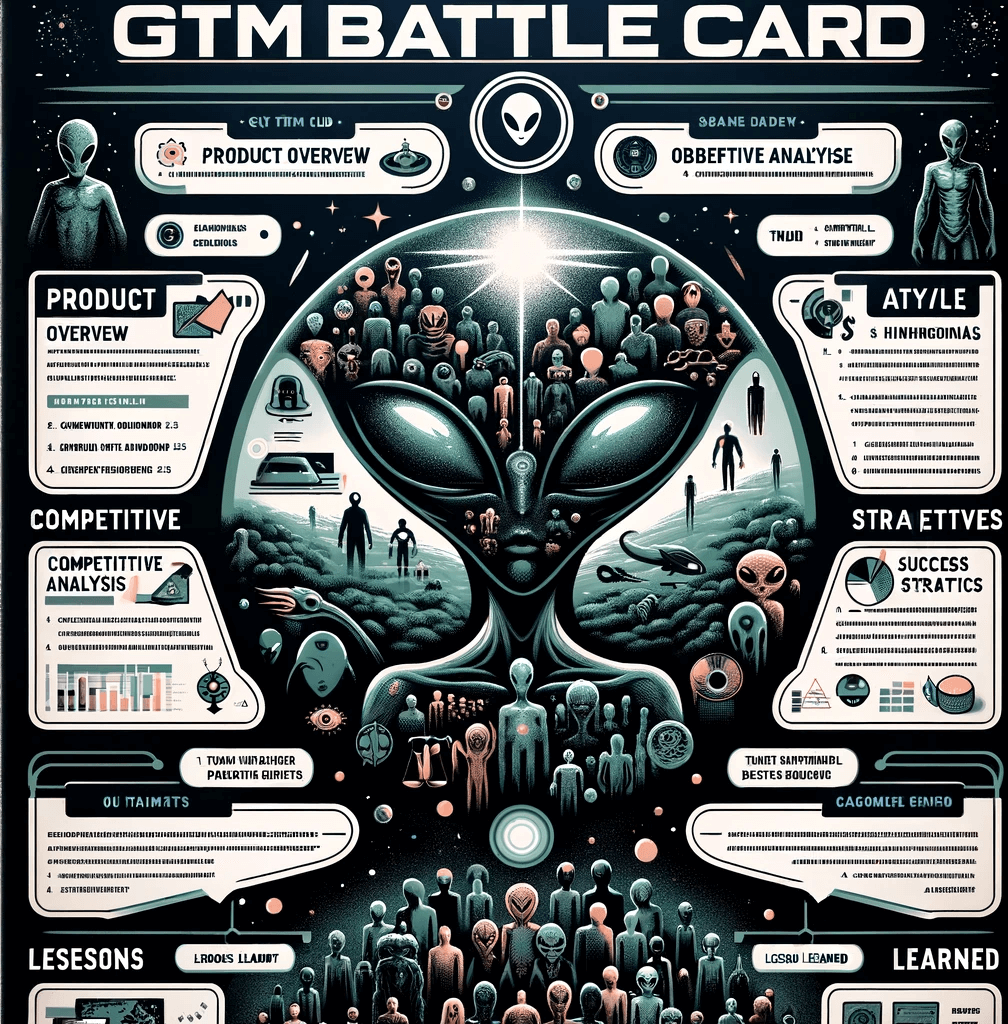Accelerating GTM: How Battle Cards Can Help Sales
Discover how battle cards revolutionise sales velocity and GTM strategies. This article delves into their pivotal role in empowering sales teams, enhancing product positioning, and driving successful market engagement.

In the highly competitive field of sales, particularly in sectors like SaaS, battle cards have become indispensable tools. These concise, accessible materials are vital for sales representatives, providing a deep understanding of their products and competitors. Far from mere informational assets, they are strategic tools essential for sales teams' success.
Speeding Up GTM with Battle Cards
Battle cards are crucial in sales-led Go-to-Market, offering sales teams a significant advantage. These tools do more than store information; they strategically position products against competitors. Highlighting your product's unique selling points (USPs) enables sales teams to confidently emphasise its advantages.
The value of battle cards lies in their efficiency. They act as quick reference guides, allowing sales reps to swiftly respond to customer objections and tailor messages to various market segments. This not only saves time but ensures impactful customer interactions. Their consistency in messaging also helps maintain brand integrity and scale upwards from founder-led sales.
Battle cards are integral to aligning sales efforts with the broader GTM strategy. They are adaptable tools that can be updated to reflect market changes and ensure relevancy and effectiveness. For new team members, they are invaluable resources for quickly understanding the competitive landscape. The data-driven insights they offer lead to more informed and strategic sales approaches.

Usual Content of a Battle Card
A compelling battle card includes:
- Product Overview: A concise summary of your product, highlighting its core features and USPs.
- Target Customer Profile: Defines the ideal customer, detailing industry focus, company size, and key decision-makers. If you have multiple target segments, create battle cards for all.
- Competitive Analysis: A detailed comparison with leading competitors, noting their strengths and your product’s advantages. You can also create dedicated battle cards for each main competitor.
- Objection Handling: Lists common objections and provides strategies to counter them effectively.
- Case Studies/Testimonials: Real-world examples demonstrating the benefits of your product.
- Pricing Strategy: Comparison of your pricing with competitors, emphasising the value at your price point.
- Success Metrics: Key performance indicators impacted positively by your product.
- Lessons Learned: Real-life stories of how the sales team has closed notable deals against the usual competition.
Battle cards should be easily accessible to the sales team, ideally integrated into CRM systems or shared through internal platforms. Regular updates are essential to reflect the latest market developments, competitive insights, and product changes. Sales teams should be encouraged to provide feedback for continuous improvement.
Incorporating battle cards into your go-to-market and sales strategy is crucial for maintaining competitiveness. Battle cards are not mere informational tools but blueprints for strategic execution. They equip your team with essential knowledge and confidence, enhancing their ability to succeed in sales conversations.




